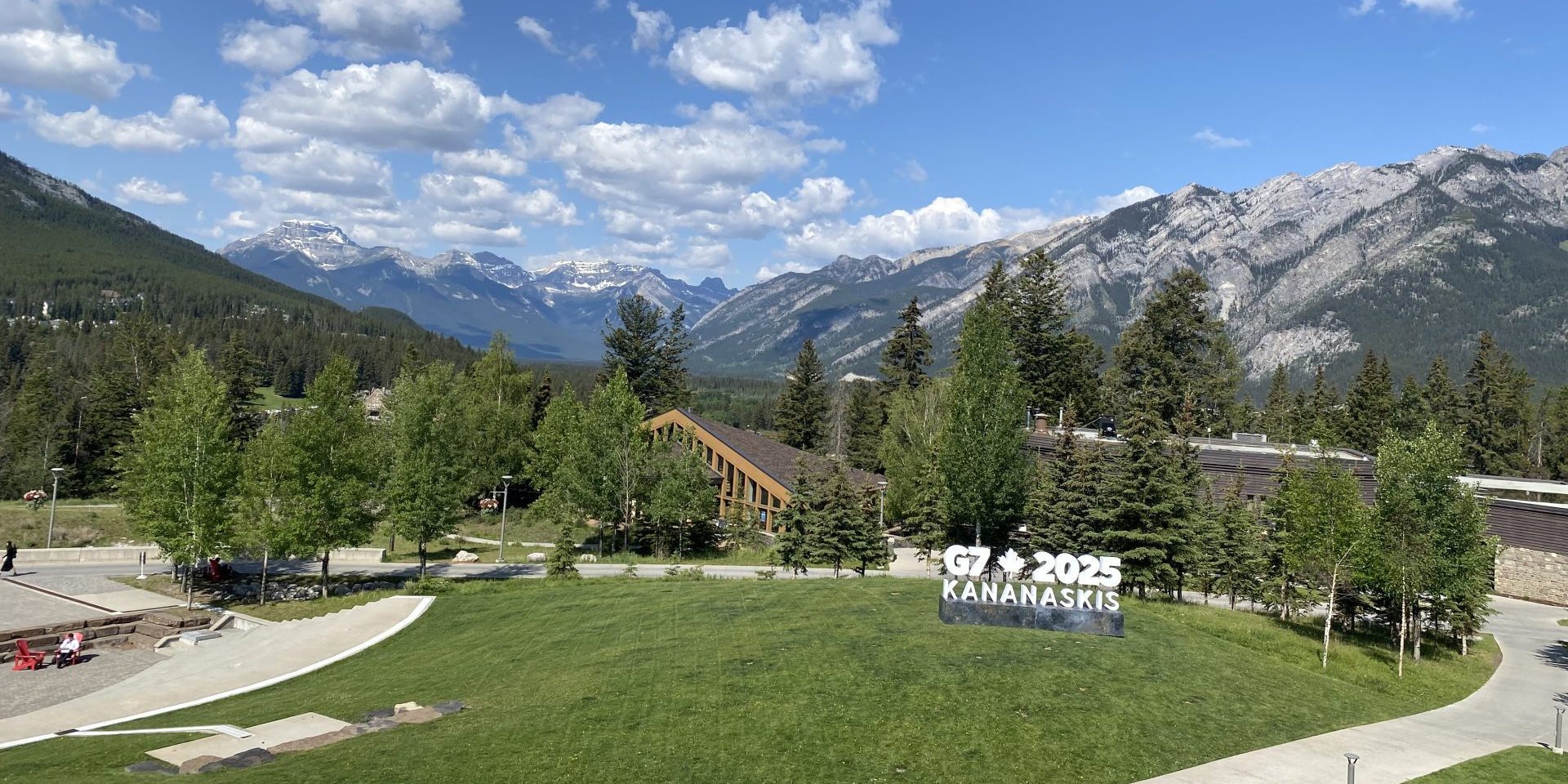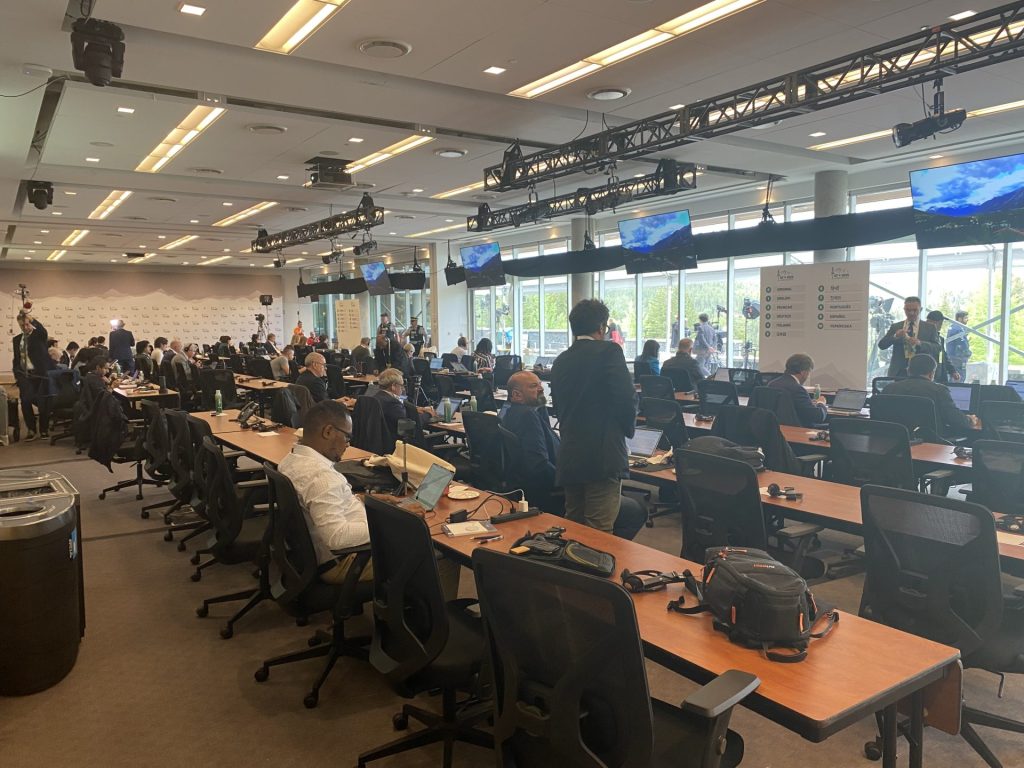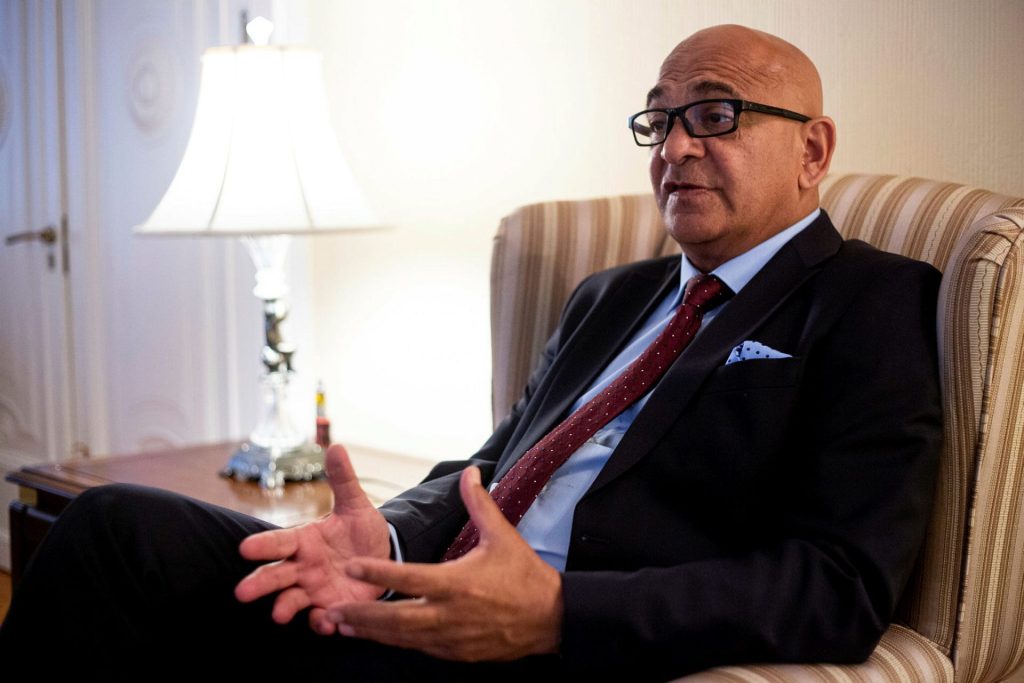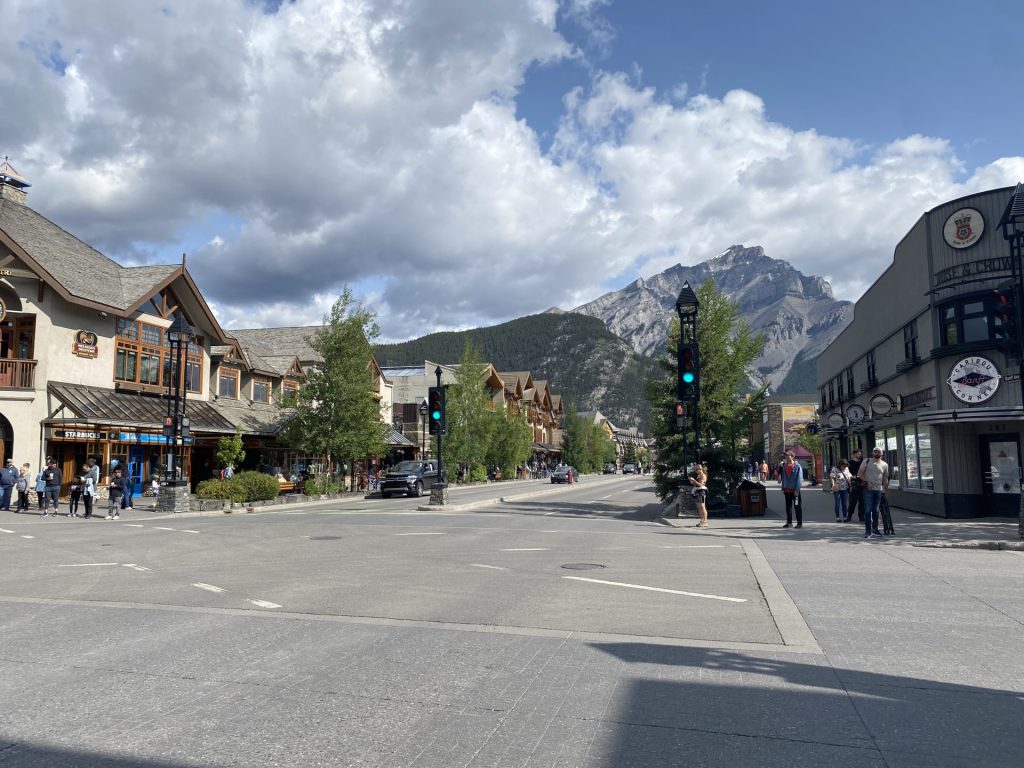Rocky Mountain constraints: a look inside the G7 summit

BANFF, ALTA.—The first official day of the G7 Leaders’ Summit was coming to a close and the gathering was about to be flipped on its head.
At 5:29 p.m. MT, White House press secretary Karoline Leavitt posted on social media that United States President Donald Trump would be heading home after the leaders’ dinner on June 16.
Earlier in the day, Prime Minister Mark Carney (Nepean, Ont.) told Trump that the G7 is “nothing without U.S. leadership.” Carney now had to navigate the presidency with that specific leadership void.
More than 80 kilometres from the summit site in Kananaskis, Alta., the international press stationed in the Banff Centre’s designated media room started rewriting their stories.
Nestled on Tunnel Mountain, the Banff Centre is surrounded by towering Sulphur Mountain (2,451 metres in elevation), Mount Rundle (2,949 metres), and Cascade Mountain (2,998 metres).
Some delegations weren’t given a warning that Trump would be leaving—instead they read the news on social media like everyone else. Canada, as host, was told through official channels that the president would be taking his leave.
Trump’s departure paved the way for a more normal summit experience; gone were the existential worries over whether a classic Trumpian outburst would derail the gathering.
But it was the shadow of Trump that upturned the closing of the summit. The National Post reported that an official from the Prime Minister’s Office provided a background briefing to reporters during which they had claimed that a proposed joint statement on Ukraine was “kiboshed” by the U.S. because it wanted the language to be “watered down.”
In the end, G7 leaders agreed to seven joint statements, but Ukraine wasn’t one of them.
At a closing press conference, Carney played down that there were any efforts by Trump to adjust the language on Ukraine.
Carney’s chair summary states that G7 leaders recognized that Ukraine has “committed to an unconditional ceasefire, and they agreed that Russia must do the same,” as well as that the leaders are “resolute in exploring all options to maximize pressure on Russia, including financial sanctions.” Carney said all leaders agreed to that language.
“This was discussed by all seven leaders [and the presidents of the European Commission and European Council] last night at dinner—these exact words—and they are in my chair’s summary,” he said. “I held this for my chair’s summary. … There would be things that some of us—Canada included—would say above and beyond what was said in the chair’s summary.”

During the press conference, Carney was quoting from a chair summary that had yet to be released to the media.
A couple hours later, the PMO retracted its claim that the U.S. was the reason for the failure to release a joint statement on Ukraine.
“No proposed joint statement regarding Ukraine was distributed. Canada’s intention was always for the important language to be part of the G7 chair’s summary statement, and it was,” said PMO spokesperson Emily Williams.
For the second straight day, reporters once again returned to their laptops for a rewrite.
Inside Kananaskis
For the world leaders who were in Kananaskis on Day 1, they enjoyed a menu with Acadian seafood, local Alberta vegetables, and Okanagan Valley wine. On June 17, the menu included Alberta beef, Canadian cheese, and Ontario and other British Columbia wines.
Kananaskis was off limits to all but a select few members of each leaders’ delegation, and to a select group of pooled reporters. Even some of the reporters who made it to the summit site were walled off in the on-site media room away from leaders and government aides.
For the South African group accompanying President Cyril Ramaphosa and his aides, that number was six, including a cabinet minister and the G20 sherpa.

South Africa was invited to the summit as they hold the presidency of the G20, and will hold their leaders’ summit in November.
The limited admission to Kananaskis led to delegations having to spread out throughout the region.
Many had people stationed in Banff, some were in Canmore, and others remained in Calgary.
Ramaphosa spent the entirety of the first day of the summit in Calgary, where there was a dinner hosted by Governor General Mary Simon and attended by Canada-U.S. Trade and Intergovernmental Affairs Minister Dominic LeBlanc (Beauséjour, N.B.).
South Africa High Commissioner to Canada Rieaz Shaik told The Hill Times during a phone interview from Calgary that Ramaphosa spoke with Simon about their respective nations’ reconciliation efforts.
It was in Calgary that Ramaphosa held a bilateral meeting with Carney on June 15 before the Canadian prime minister headed to the Rocky Mountains.
Shaik said it is “very costly” for countries to have members of their delegations scattered in a number of cities.
“Canada chose it like this,” he said. “They had their reasons in terms of managing such a large delegation of people coming. And there’s no one place that can accommodate everybody.”
But Shaik said the summit has turned out “quite well.”
Back in Banff
Any onlooker would be hard-pressed to know a summit with some of the world’s most powerful leaders was happening nearby.
Sitting above the resort town, the Banff Centre played host to hundreds of media that came to cover the Group of Seven.
Television screens in a pair media rooms backlit with views of the Canadian Rockies displayed scenes from the summit. But often those scenes were repeating content that was out of sequence, leaving some reporters to question what they were looking at.
French President Emmanuel Macron was scrummed on both days of the summit in Kananaskis, but interpretation wasn’t provided for reporters in Banff, despite the media rooms broadcasting the nine different languages that interpretation was available for the summit.
When LeBlanc and Canadian Ambassador to the U.S. Kirsten Hillman scrummed with reporters in Kananaskis, it wasn’t streamed to reporters in Banff—leaving parliamentary reporters watching broadcast news back in Ottawa with more access to the summit than those in geographic proximity.
When the summit began, reporters sequestered in Banff were told they would still be able to ask questions of leaders in Kananaskis through a simulcast press theatre on site. That was never used. When Carney took reporters’ questions to wrap up the summit on June 17, reporters were told that only those in Kananaskis would be able to query the prime minister.

Cooperation Canada chief executive officer Kate Higgins said the site was a downgrade for civil society members compared to previous years.
“Typically, at a G7 summit, civil society and other engagement groups would have space with the journalists in the media centre,” she said. “This time around, we’re in the corridor outside.”
“That’s concerning, and that is a step-change to how things have been done at G7s for a very long time,” Higgins said.
She said the layout of the summit with limited access to Kananaskis made engaging with governments and decision-makers “very difficult.”
“That’s really challenging,” she said.
Higgins said that the last-minute planning due to Canada’s electoral calendar made it difficult for civil society groups at the G7.
“The last-minute nature of this does make challenges for civil society to kind of show up and bring out their best perspectives,” she said, remarking that the tight timeline precluded many representatives from civil society in the Global South from getting to in Banff.
nmoss@hilltimes.com
The Hill Times






 LICENSING
LICENSING PODCAST
PODCAST ALERTS
ALERTS













